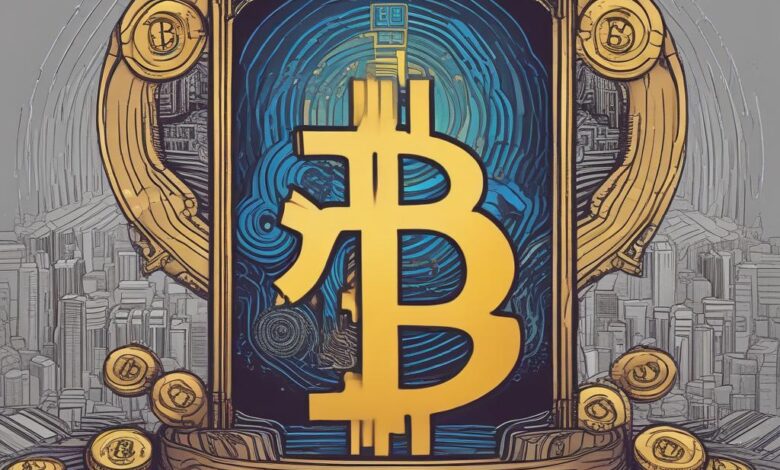
The History of Bitcoin
Table of Contents
1. Introduction
Bitcoin is a form of digital currency, created and held electronically. Bitcoin has gained immense popularity in recent years, especially in 2013. In 2012, a single Bitcoin was priced at USD 5 and during its peak in 2013, the value of a Bitcoin had gone up to USD 1242 due to its high demand. There are a few ways to get Bitcoins. You can buy them using a “real” currency. You can sell things and let people pay you with Bitcoins. Another way to get Bitcoins is “mining” them. Mining is competitive and it’s not easy. When the Bitcoins were first created, the person who created it solved a math puzzle and was rewarded with 50 Bitcoins. Now, the math problems are so tough that you’ll need special computer hardware to mine Bitcoins. It is also possible to steal Bitcoins, but it is camouflaged to be one of the hardest ways to get it. Not only does it require high hacking skills, but also thinking of a code to decrypt the Bitcoins themselves. Once you get hold of a Bitcoin, it will be stored in a digital wallet. You can send Bitcoins to others’ wallets with your computer, tablet, or smartphone, and you can also lose your Bitcoins if your wallet is lost. Once sent, the transactions are irreversible and it is untraceable, unless you are willing to be tracked by the recipient.
1.1. What is Bitcoin?
Digital world has engulfed our lives into a serious obsession. We are prepared to recognize the impact and penetration of technology in our day to day affairs. Technological arena has its pros and cons but it has led to various revolutionary inventions steeping the ease and betterment of life. One such invention is ‘Bitcoin’, the brainchild of a group or an individual namely Satoshi Nakamoto. This developed into a wonderful concept, a revolution in the form of digital currency. On 29th October 2008, a paper was published by Satoshi Nakamoto which led to the introduction of a new form of digital currency known as Bitcoins. Bitcoins is a decentralized digital currency exchange which enables us to make safe, secure, peer to peer transactions without the intervention of a third party such as a bank or a financial institution. This is done over the internet. The importance of Bitcoin lies in the fact that it’s not governed by any country’s economy. It has its own global economy which is a significant feature. It results in cheaper, faster, and safer transactions worldwide. Also, it’s a good mode of investment and has high future scalability. This digital currency can be acquired in various ways such as through competitive mining. The best part is that it’s a deflationary currency as the production is limited to 21 million coins. It has a selected audience and is not subjected to any inflation manipulations. Because of all these great features, it’s likely to shape the future of digital currency. The San Jose Bitcoin conference also provides insight into the bright future of Bitcoin. The Silicon Valley is expected to provide a further boost and much-needed stability to the Bitcoin economy in the near future.

1.2. Importance of Bitcoin in the Digital World
This could be the most significant impact of Bitcoin on the global economy. It could empower people to be in control of their money. It can be said that the central banking system being run today is not optimally benefiting everyone involved. There have been times of economic turbulence where the government has printed too much money to fund the national debt, which has inflated and devalued the currency. With a fixed known rate at which new Bitcoins are created, substituting for a central banking system control, the ability to “print” coins could be exactly what some economies need. The fact that Bitcoin can operate outside the current banking and government system has been said to bring huge benefits to those who have had their money mismanaged by governments. Finally, it can be on a micro level where people in developed countries are used to online payment systems (PayPal, credit cards, etc.) and take it for granted. But there are millions of people from countries such as Nigeria, India, and Indonesia who have been left out from the current system because there is no easy accessible method to transfer money online to each other or to international markets. For these people, they can use Bitcoin as a payment system and currency, which may finally bring an end to the price of being left out and enable them full access to the global economy.
The introduction of Bitcoin has had a significant impact on the digital world, as financial institutions and businesses are taking steps to address complex and costly financial services such as cross-border payment, settlement, and treasury services. Digital currency, such as Bitcoin, is having a potential impact on how consumers make payments, store money, as well as on the company’s financial risk and control. Bitcoin is trying to make it easier to transfer money between two parties by eliminating the need for trusted third parties, such as banks or credit card companies. It does this by transferring ownership of Bitcoin to the other party using a method of sending signed messages to the blockchain, which will later be used as incontrovertible proof of the transfer. This is all done at a lower cost than the traditional method of transferring money.
2. Early Beginnings of Bitcoin
While the idea of Bitcoin had been floating around in many technology-based communities for several years, it was not until late 2008 that it found its roots in the mind of a cryptologist by the name of Satoshi Nakamoto. His whitepaper, titled “Bitcoin: A Peer-to-Peer Electronic Cash System” was posted to a metzdowd.com cryptography mailing list. This was the platform that first introduced the world to what would become a groundbreaking invention, as well as the platform that would propagate the exchange of ideas and concepts that would help to further develop Bitcoin.
The paper received vast attention in the cryptography community, and online exchanges with the community ensued. In these discussions, abundant interest was garnered in the hashcash proof of work algorithm that had been proposed in the whitepaper. It was through this algorithm that Bitcoin was able to implement a distributed currency, with no central authority, and avoid the double-spending problem. Satoshi implemented this feature into the Bitcoin client that he released publicly at the beginning of 2009. With this implementation, the first block of bitcoins was generated, marking the start of Bitcoin’s existence. This block is known as the “genesis block” and contains the text: “The Times 03/Jan/2009 Chancellor on brink of second bailout for banks,” which many have speculated was a message from Nakamoto concerning the relevance of Bitcoin in today’s economic climate.
2.1. The Creation of Bitcoin
In 1998, computer engineer Wei Dai published a proposal for a new form of money featuring cryptography. This would be the very first time it’s described as cryptocurrency. Two years later, Nick Szabo, who is a computer scientist and cryptographer, published and developed the concept of bitgold. Bitgold would use self-recharge puzzles to secure it and be a decentralized form of money or property which shares some sort of similarities to Bitcoin, yet the two are different in a lot of ways. Like gold, bitgold’s existence would cease if the safety system was later broken. Fast forward a little bit to November 2008, a paper was posted to The Cryptography Mailing List. This paper was written by an unidentified person or persons using the name Satoshi Nakamoto. This will be the first time Bitcoin was introduced. The paper is called “Bitcoin: A Peer-to-Peer Electronic Cash System.” This paper detailed methods of using a peer-to-peer network to generate what was described as “a system for electronic transactions without relying on trust.” The paper also explains the chain of blocks and timestamp to encode market data into a computational problem. It would also have a proof of work to be accepted by the majority.
2.2. The Whitepaper: “Bitcoin: A Peer-to-Peer Electronic Cash System”
The whitepaper titled “Bitcoin: A Peer-to-Peer Electronic Cash System” was released in 2008 by the creator of Bitcoin, going by the pseudonym Satoshi Nakamoto. The idea behind this whitepaper was to introduce and explain a system of sending payment between two parties without the need for a financial institution. The overall goal was to create a decentralized system that would replace the current electronic cash system, which relies heavily on trust. This is because it is designed that the centralized system has to openly display the silver inside the electronic currency, and essentially the price is very volatile on a regular basis. The major drawback of the current system is the repeated use of non-reversible transactions, which protect the consumer in terms of recognizable annulments and protection against foreign charges. With the chargebacks so common in the current system, protection for merchants is also not viable. The paper suggests two possible methods to bypass the centralized currency using a trusted third party to offer debt services. Bitcoin itself is one of these methods. This takes us to the removal of the need for trust between the two parties in the trade, and many scenarios where the third party may have been dishonest at the expense of the other two parties.
2.3. Satoshi Nakamoto: The Mysterious Creator
In October 2008, Nakamoto published a paper on a cryptography mailing list that detailed the Bitcoin software and the double-spending problem. He was active in the development of Bitcoin up until December 2010. Then, he handed over control of the source code repository and network alert key to Gavin Andresen, transferred several related domains to various prominent members of the Bitcoin community, and stopped his involvement in the project.
Nakamoto claimed to be a man living in Japan, born on April 5, 1975. However, speculation about the true identity of Nakamoto has mostly focused on a number of cryptography and computer science experts of non-Japanese descent, living in the United States and Europe.
Satoshi Nakamoto is the name used by the unknown person or persons who designed Bitcoin and created its original reference implementation. As part of the implementation, they also devised the first blockchain database. In the process, they were the first to solve the double-spending problem for digital currency. They were active in the development of Bitcoin up until December 2010.

3. Bitcoin’s Impact and Growth
3.3 Price Volatility
Bitcoin is still a very young currency and as it has moved through its various phases of development, government regulation has been sparse. The period of the Silk Road has come and gone with the closure of that marketplace and a more litigious environment is assuming around Bitcoin. Thus far, price regulation efforts have been somewhat futile. Regular bouts of price manipulation have proved that this is an immature market in its teething phase, although the price charts of the currency’s lifetime are steadily stabilizing. When compared to other currencies, Bitcoin has defied all odds in terms of its sustained value increase. Volatility will continue to decrease as the technology matures and time goes on.
3.2 The Rise of Bitcoin Exchanges
In the earlier days, acquiring bitcoins was a burden. There were very few options available and funding your account took much longer due to transfer and bank funding bottlenecks. The establishment of MtGox in 2010 and the subsequent rise and fall gave evidence to the coming need for options in acquiring and liquidating Bitcoin. There are now more options to exchange Bitcoin with national currencies than ever before; the market is very liquid.
3.1 Adoption and Popularity
While its journey is not yet complete, the new global economy which Bitcoin is slowly enabling has the potential to bring about a more prosperous age with both more economic equality and justice for all who live on this planet. With more and more awareness spreading about Bitcoin, the general public is learning more about it as an alternative to national currencies. Businesses will start to spread and the complex ‘network effect’ will cause a widespread cascade of Bitcoin adoption. As the price rises, so does the incentive for people to save and then spend Bitcoin instead of holding only foreign currency which is inflationary by nature. It is only a matter of time before global adoption is possible.
Today, Bitcoin is more than a decentralized currency or speculative asset. It is a jurisdiction-free money that allows users to control and protect their wealth. It gives the individual the benefits of a Swiss bank account in their pocket. Just a decade ago, few people would have thought this was possible.
3.1. Bitcoin’s Adoption and Popularity
An interesting constant to the nature of the new coins is that their creation will end in roughly 2140, after which no more new coins will be created. It is said that the last fraction of a bitcoin will be mined in 2140, and from then on, the source of new coins will be the transaction fees. These are certain rules that are known to everyone and very long in advance, which means it is the closest to a centrally dictated currency supply as can be.
This predictability of monetary inflation is to address the manipulability of a currency by a central authority, who can use inflation of the money supply to take a tax on wealth stored in money. A hard limit on the total number of bitcoins and rules for how the new coins are introduced gives a way to solve that problem without creating the parallel issue of a difficult-to-change complex set of monetary policy rules to try to tinker with the currency’s value.
As of 2013, there are almost 11 million bitcoins in existence, with a hard limit of 21 million. As time goes on to create them, the work is increasingly difficult. The number of bitcoins in existence will never exceed slightly less than 21 million, meaning that a halving of the rate at which new coins are created is built in. This means that the total number will approach but never quite reach 21 million, making extinct the question of indefinite inflation to the money’s value.
3.2. The Rise of Bitcoin Exchanges
The increased rate of Bitcoin adoption over the years brought about the need for a unified currency system among Bitcoin users around the world. This led to the formation of Bitcoin services and more prominently, Bitcoin exchanges. Bitcoin exchanges are online merchants that facilitate the exchange of Bitcoin to legal tender and other forms of currency, one of the most popular being Mt. Gox, which was the first Bitcoin exchange to have a trading price and was responsible for over 70% of all Bitcoin transactions. Exchanges have built-in mechanisms to be autonomous and offer heightened security to prevent fraud. This is important due to the lack of a central system by which a user can be refunded their money. The Mt. Gox disaster is an example of what happens when the decision-making process is not democratic. As of today, many online merchants have made available Bitcoin exchange services, and with the general acceptance of Bitcoin by PayPal and the inclusion of Bitcoin in FOREX trading (and now options contracts), the increase in available Bitcoin currencies will allow us to trade into legal tender at a moment’s notice. This constant access to trade Bitcoin will provide an incentive for a more stable valuation of the currency and will also promote further adoption of Bitcoin as the currency moves into mainstream finance. At present, there is still not a significant amount of volume in relation to the rest of the Bitcoin economy, which is why exchange rate volatility is still a primary concern.
3.3. Bitcoin’s Price Volatility
One clear contributor to Bitcoin’s recent price volatility has been the situation in Cyprus. The possibility of bank closures at the height of the Cypriot Financial Crisis beginning in February 2013 resulted in a surge of interest in Bitcoin. Cypriots learned that their bank account would be frozen overnight and restricted to daily ATM withdrawals of €100. With this in mind, many sought to convert their Euros to a more stable currency. With Bitcoin price not influenced by interest rates, inflation, or any political uncertainty, it can be argued that it was a more attractive option. At the same time, the Chinese central bank took a hostile stance towards Bitcoin and other cryptocurrencies, banning financial institutions from using the products but not flat out prohibiting individuals from using them. This is a possible explanation for the coinciding drop in Bitcoin price.
A major issue that has emerged for Bitcoin as it becomes more widely used is price volatility. The cryptocurrency is known for rapid and frequent price fluctuations. This has, to a large extent, been driven by speculative activity. Because BTC is traded on various exchanges with differing prices, it is difficult to establish a ‘true’ price. It is further complicated by the relatively small size of the market, which allows for larger price movements. High price volatility provides traders with the opportunity to generate high returns (or high losses). It also makes it difficult to use Bitcoin as a unit of account, since relatively small amounts of Bitcoin can have large differences in value. A more stable price will increase the cryptocurrency’s appeal to a wider audience. To this end, some long-time supporters have created the ‘Real Bitcoin’ project, which aims to increase price stability by coordinating development on the Bitcoin platform.
3.4. Bitcoin’s Role in Financial Transactions
A financial transaction is an agreement, communication, or movement carried out between a buyer and a seller to exchange an asset for payment. Bitcoin has grown quickly since its inception in 2009. Starting off, the virtual currency was relatively unknown by the general population. Using intriguing incentives such as decentralized control, more efficient means of transferring capital, and a finite number of coins created an aura of curiosity. As the world became more and more technologically reliant, it only made sense that an innovative payment method would be devised. With people becoming increasingly interested in the concept and a greater knowledge of how to use it, it’s no surprise that Bitcoin’s popularity has soared. Bitcoin is still relatively new; with the finite advantage though, it does have a substantial lead over most currencies in terms of stability. During this coming stabilization, the roller coaster of price volatility will begin to slow down. This doesn’t mean that the price will stop changing, but the floor/ceiling percentages will start to narrow. With a more stable price, more sellers will be willing to let go of their goods for Bitcoin, knowing they can recoup the cost. This leads to an increase of sellers and buyers where a cusp of financial transactions occurs. The graph below shows an increase in the number of daily transactions. Finally, Bitcoin is a fledgling currency that can be used for strategic bargains. Nowadays, more types of goods and services can be bought with Bitcoin. An exchange can even be made for other currencies. As the liquidity of Bitcoin increases, we will see a global shift where it becomes a staple for many financial transactions.
4. Future Outlook of Bitcoin
The future is always clouded in uncertainty. Nevertheless, it is always exciting to speculate. From all indications, there are challenges ahead for the Bitcoin ecosystem of which its community will need to resolve. How they are resolved will shape the future of the digital currency. The issue that will foremost be on the minds of many is the block size debate. Currently, there is a limit of 1MB per block. This was put in place by Satoshi Nakamoto as a measure to prevent spam on the network. However, as of late, the network has been consistently reaching the limit and as a result, many transactions are being delayed, sometimes for hours, because no (or very low) fee transactions are being included in the blocks. This is a problem with no quick solution and will be discussed further in an upcoming article. Should a solution not be found, this could potentially lead to a hard fork which would result in two different ledgers, essentially dividing the Bitcoin community.
One of the lesser known challenges will be the halving of block rewards which is now only a matter of months away. This will have a direct impact on the security of the network as it effectively halves the amount of funding for the miners. So long as the price does not change, this is also likely to result in a significant decrease in the number of transactions that are included in each block as the fee will have to become a greater percentage of the block reward. At some stage this may lead to a tragedy of the commons whereby the fees are high, but there is little security because the block rewards are too low. An empirical simulation of this can be seen here. High fees may turn users to alternative cryptocurrencies and the lack of security could see Bitcoin become a greater target for attacks.
4.1. Challenges and Opportunities for Bitcoin
If this is the case, any moves to a global currency would be rendered a lot more difficult because transfer and borrowing of such a currency would carry a great deal of exchange rate risk. Updating an old but well-respected report on the feasibility of currency unions, it shows that the use of a common currency between countries is limited to those with a similar business cycle, and that only 25% of floating exchange rate has been eliminated between currency unions. Bitcoin would be subject to a floating exchange rate against other currencies, and adoption in specific countries would depend on the removal of exchange rate risk. Adoption by a country with a currency board or a peg to another currency would replace its own currency at the point of full convergence of the two currencies’ exchange rates. Countries with a high rate of inflation or an unfavorable exchange rate would simply ‘dollarize’. The last two options both contradict the casual convergence hypothesis because it is unlikely that the adopting country would change back to its original currency if exchange into Bitcoin carries no exchange rate risk. Unfortunately, these scenarios would further limit the areas in which Bitcoin could have previous advantages over other currencies deployed, such as taking the power away from governments on printing money and running deficits, and providing an open inflation hedge.
Stable international currency
The possibility of instability in Bitcoin has been addressed above. This may simply be a price fluctuation due to the relatively small float compared to some other currencies, or it could be a deliberate attempt to destabilize the currency. Subject to international economics, Bitcoin’s worth could also be affected by regional political or economic issues.
Following the analysis of Bitcoin’s current and possible future economic effects, and its current and possible future adoption rates, this section analyzes the challenges and opportunities for Bitcoin as a whole and for its adoption as an international currency.
4.2. Bitcoin’s Potential as a Global Currency
The decentralized nature of Bitcoin has the potential to empower individuals and businesses by providing much lower transaction fees for international payments. It could not only provide an inexpensive way to send money across the globe but also may be a useful alternative to the current, unreliable, inflation-prone fiat currencies. The current high levels of inflation in some countries have left citizens with a volatile and unreliable financial system that can lead to citizens investing their wealth or capital into more stable foreign currencies. Bitcoin could be used to efficiently bypass government capital controls that are often in place in disaster-hit countries.
Last but not least, Bitcoin’s issuance of a fixed supply of money through mathematically controlled emission by miners, and a decentralized issuance has a predictable monetary policy that is completely transparent and can be verified on the public, distributed ledger. This is a stark contrast to the monetary policies of governments and central banks, which are often opaque, unpredictable, and subject to change, and have often been used to finance wars and excessive spending. Emission of fiat currencies during times of economic recession or by a natural disaster is common, leading to a devaluation of wealth.
There has been some skepticism as to whether or not a truly international currency is feasible and can work with the necessities of a modern centralized with large multinational corporations and centralized government entities. These organizations and their politicians will often seek to increase the cost of conducting international trade through trade barriers such as tariffs and have been the cause for a series of currency wars. Adopting a Bitcoin standard has the potential to increase economic efficiency through a truly free market.
4.3. The Role of Bitcoin in the Blockchain Technology
Historically, with centralized payment systems, the initiating party involves the service of a trusted third party to perform fund transfers. The trustee acts as an agent to complete the transaction between the other parties. A typical fund transfer involves the initiating party seeking the service of a bank to do a telegraphic transfer to the recipient. The bank acts as the trustee and charges a fee to complete the transfer. Decades later, banks developed a centralized database system to record their account information. This database is used to store account information and track the history of all changes to account balances. This method proved to be more convenient, but the key information is still being controlled and held by the bank. Any changes to account balances require the passing of instructions to the bank, and no changes can be made without the approval of the bank. On the off chance of systems failure, it may result in untraceable reasons for changes in account balance, whether an increase, decrease, or error occurs. This would result in the end of fund transfer to the counterparty, initiating a fresh transfer to start the process if the exact amount does not reach the recipient.
Blockchain is a technology that allows for a very safe, secure database shared by network access. The concept was first introduced by a group of people pseudonymously as Satoshi Nakamoto in a research paper in 2008. The database is used and shared among parties who can control the information they want to see and others not. This database only stores confirmed transactions in blocks that are linked in a chronological form to form a continuous line known as a chain, thus the name “blockchain”. Blockchains are, by design, resistant to modification of the data.




